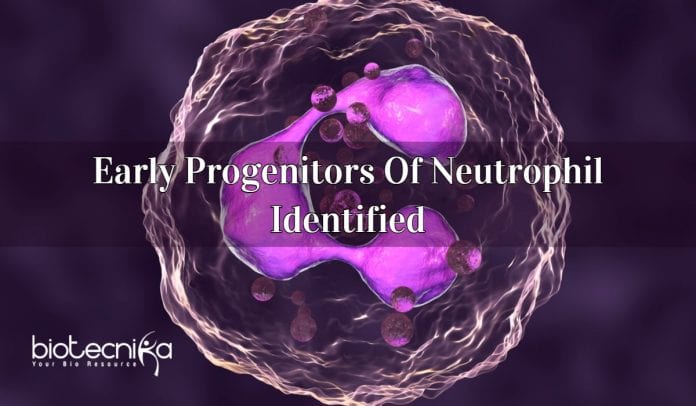Early Progenitors Of Neutrophil Identified For The First Time
Neutrophils are the warriors of the immune system, always ready to fight off diseases and help heal injuries. But all immature neutrophils are not warriors; some of them could be dangerous turncoats. High levels of neutrophils in the blood can be a sign of cancer or even due to COVID-19 infection.
A rare group of stem cells that produce neutrophils in human bone marrow has now been tracked down by scientists at La Jolla Institute for Immunology (LJI). The new study published in the journal Immunity provides researchers a potential way to prevent diseases where neutrophil development goes wrong.
Huy Dinh, a former LJI postdoctoral associate who recently moved to the University of Wisconsin–Madison, said that they had identified the stem cells that are the early origins of the most abundant blood cell type in humans, neutrophils. LJI Professor Catherine C. Hedrick, together with Dinh, led the study. Since elevated levels of neutrophils were found in both lungs and blood of severe COVID-19 patients, it has become especially relevant to know how human neutrophils develop. However, neutrophils are very hard to study.
They don’t survive well outside the human body, and growing
their stem cells is even harder. This makes the study difficult as they can only live inside human bone marrow.“Progenitor” stem cells that give rise to mature neutrophils were discovered in 2018 by the Hedrick Lab. Besides generating neutrophils, these progenitors promoted tumor growth also. So the researchers hoped that a better way to detect early cancers could be developed by identifying these progenitors. But for that, they had to first understand the neutrophil development.
A progenitor cell type that exists even earlier in neutrophil development was revealed by the new study. Dinh and team distinguished these rare cells from other types of immune progenitor cells using cytometry by time-of-flight (CyTOF). They were able to identify more specific protein markers on the surface of this early progenitor cell in this work.
Until now, scientists had been using only a few markers to track neutrophils over time, which makes this discovery of protein markers more important. The study provides new markers for tracking neutrophil development.
Researchers also found that a flood of immature neutrophils, including the early progenitor cells in the bloodstream, is often accompanied in cases of lung and skin cancers. They noticed that these immature neutrophils change as they interact with tumor cells. However, how these changes affect cancer progression still remains unsolved.
Neutrophil development was discussed a lot recently due to its elevated levels in COVID-19 patients. The researchers think that it could be the treat of the virus that forces the body to quickly churn out neutrophils, preventing immature cells from reaching maturity.
Further research is required to see if neutrophils can be a drug target for COVID-19 or can be tied to prognosis. The exact mechanism that stops neutrophils reaching maturity has to be identified. Identifying the early progenitors was critical for trying to control or target these cells.






























